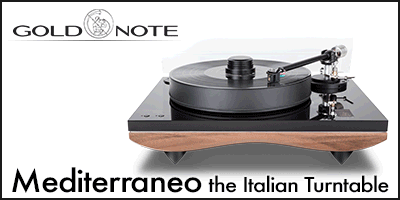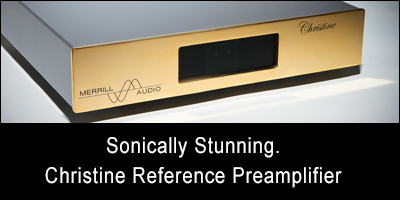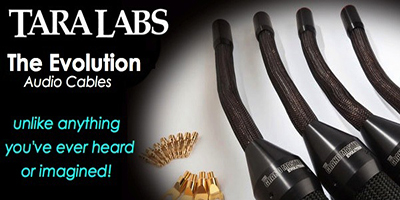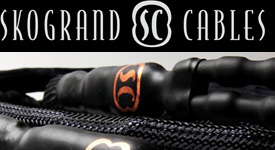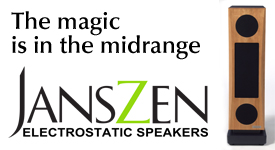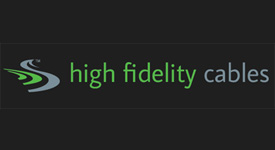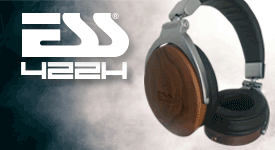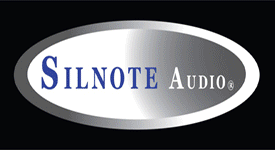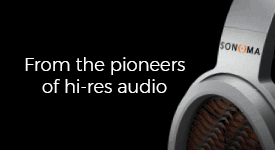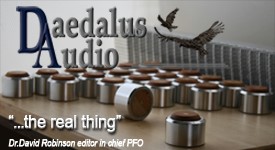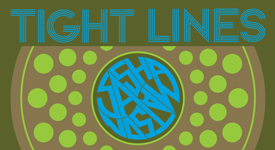The feature review of the Audio Note (UK) CD 4.1x ‘Level Three’ Red Book CD player has now been published at Positive Feedback HERE.
As is my custom, I like to give you a 'review sneak peek' into my soon to be published feature articles for Positive Feedback.
This time the feature article 'sneak peek' is about the Audio Note (UK) CD 4.1x ‘Level Three’ Red Book CD player.
The full article will be published at Positive Feedback in the next few weeks, so stay tuned for more!
Enjoy!
The Audio Note (UK) CD 4.1x ‘Level Three’ Red Book CD Player: Digital Transcendence!
Greetings friends, I hope life is treating you well in 2022.
Today I have an impressive Red Book CD player to tell you about, the Audio Note (UK) CD 4.1x Red Book CD player (MSRP $14,331 USD).
The Audio Note (UK) CD 4.1x CD player is an expensive high-fidelity Red Book CD player with a pro-level build quality that sits towards the top of Audio Note (UK)’s Red Book CD player product line.
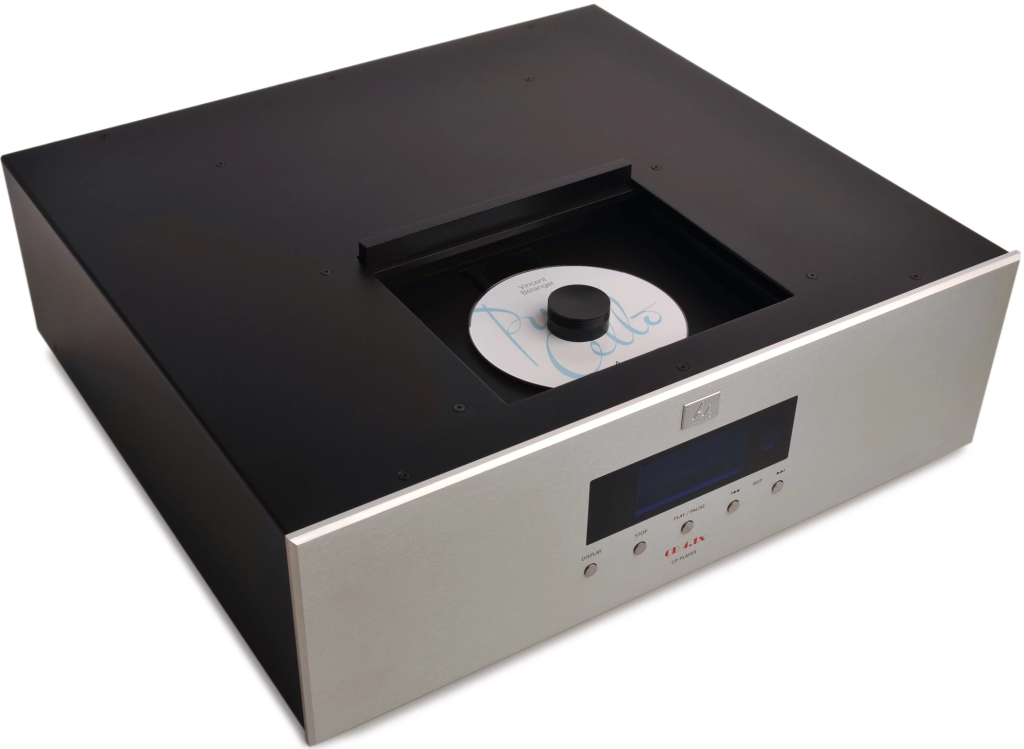
Audio Note (UK) CD 4.1x 'Level Three' CD player. Photo courtesy of Audio Note (UK).
You might be wondering why I’m writing about an expensive Red Book CD player for you in 2022.
After all, my preference for many years has been good analogue sources for playing my vinyl record collection.
With vinyl records currently enjoying a well-deserved renaissance in popularity, why would I - or you - even consider Red Book CDs as a viable music software choice? I mean aren’t Red Book CDs and CD players passé in 2022?
Those are both fair questions, and to be perfectly candid, I had long considered Red Book CDs and CD players to be second tier choices for serious listeners.
Red Book CD players had a disappointing debut way back in 1982 when the first consumer CD players were released, and those early CD players sounded sterile, harsh, and just generally amusical to me. Ick.
Until recently, every CD player I have listened to after their ignominious debut in 1982, fell far short of the listening pleasure I experienced from my turntables and vinyl records.
However, something important happened to change my mind about the relevance of Red Book CDs and CD players for contemporary listeners.
I have even come to the conclusion that for some listeners a high-fidelity CD player may actually be the most important source component of all.
My sea change in opinion came about from listening to music.
In particular, in addition to the usual recordings from the magnetic era's stereo period (1958 to 1975), I have found that I truly enjoy listening to monaural recordings from the acoustic (1877 to 1925), electric (1925 to 1945), and early magnetic (1945 to 1957) eras of the recording arts, as some of the greatest and most important musical performances in our historic recorded music canon reside there.
It used to be that if one wanted to listen to the great musical performances found on monaural records from across the acoustic, electric, and early magnetic eras of the recording arts at their best, it meant having multiple dedicated analogue sources that were optimizable for the many equalization curves found on those early record albums before 1954.
While we mostly take it for granted, the standard RIAA equalization curve we know today didn’t come into existence until 1954. Prior to 1954 there were reportedly more than 100 equalization curves in use for adjusting the volume of the different frequency bands of recordings to get the smooth response needed to play back a record album.
These days, only a very few fortunate listeners have access to the hugely important canon of albums that were released during the acoustic, electric, and early monaural magnetic eras of the recording arts, and fewer yet have access to those records in pristine condition.
Our worldwide music culture, our entire historic recorded music canon, and the recording arts that created it, are of immense significance to music lovers and audiophiles worldwide.
Fortunately for us, it turns out that now there are actually a fair number of music labels specializing in early recordings from the acoustic, electric, and early magnetic eras of recording. They have done all the hard work of restoring, equalizing, and transferring the most pristine examples of those recordings to digital, so you and I can listen to those important musical performances on Red Book CDs.
I have found having such ready access to those historic recordings on Red Book CDs to be a really big deal for me in learning about and enjoying the entirety of what our historic recorded music canon has to offer.
Not only that, it turns out that by documenting those important early recorded music performances with digital transfers from 78 records, those record labels have created a substantial ‘Library of Alexandria’ type of musical resource for future generations of listeners, so that they too will be able to easily access and enjoy the remarkable accomplishments documented in our early recorded music canon.
Personally, I believe every music lover and audiophile would benefit significantly from learning more about the early eras of recording, the musicians that were recorded, and listening to the great performances of music documented in our historic recorded music canon. I know I certainly have.
It also turns out that there is a lot more musical potential in those Red Book CDs than I had ever imagined possible.
It wasn’t until my review of the Audio Note (UK) CD 2.1x/II Red Book CD player in Positive Feedback Issue 112 (photo below), that I realized how indispensable a high-fidelity CD player was for my listening enjoyment, and for the expansion of my listening horizons.
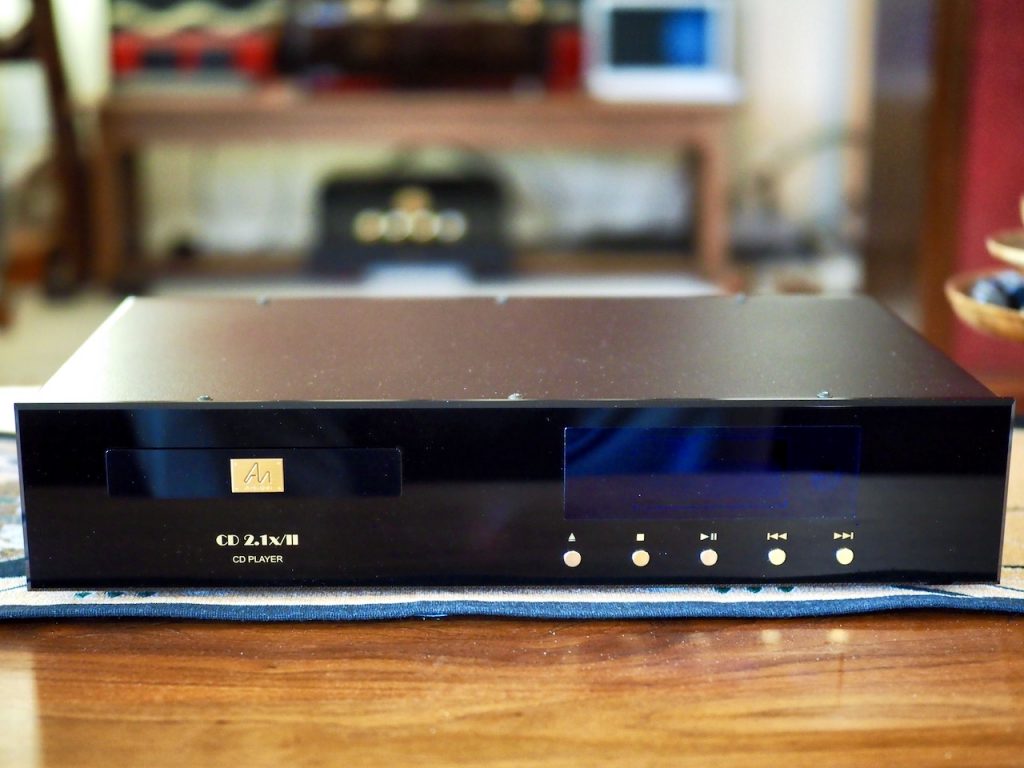
It turned out that the Audio Note (UK) CD 2.1x/II CD player delivered musical performances from Red Book CDs that were so satisfying that they were comparable to the sort of musical enjoyment I experienced while listening to LPs on my turntable.
The Audio Note (UK) CD 2.1x/II Red Book CD player provided a natural sounding, eminently musical, and high-fidelity presentation of recorded music from CDs that I immensely enjoyed. I was smitten with its musical charms.
The convergence of the availability of those important acoustic, electric, and early magnetic monaural recordings on Red Book CDs, and the appearance of high-fidelity CD players to listen to them on, is a tremendous resource for present day listeners.
For listeners passionate about the great performances of music that reside in all the eras of our historic recording arts, the importance of having access to so much of our historic music canon on Red Book CDs, and being able to play them back over high-fidelity Red Book CD players like the Audio Note (UK) CD 2.1x/II and CD 4.1x Red Book CD players, cannot be overstated.
A high-fidelity Red Book CD player turns out to be both a practical and important source component for those of us who enjoy exploring the great musical performances in our recorded music canon from all of the eras of our recording arts.
In fact, for those listeners with wide-ranging interests in the great musical performances of our recorded music canon that span the acoustic, electric, magnetic, and digital eras of recording, a high-fidelity CD player may now be the single most important source component of all.
I hope in this article I can share with you some of the tremendous joy I have experienced from listening to and learning about the great musical performances recorded during the acoustic, electric, and magnetic eras of the recording arts that are now available as Red Book CDs.
Being able to learn about and listen to those early performances on high-fidelity CD players has been an extremely positive life-changing listening experience for me, one that has made me more aware of the broad span of musical treasures contained within our vast recorded music canon.
If you haven’t already, I hope one of these days you will be able to join me in this grand adventure of exploring all the great recordings of music that are present in our historic recorded music canon.
From the earliest acoustic era recordings to the most revered magnetic era stereo recordings, I have experienced the tremendous listening satisfaction and musical illumination that comes with experiencing the full breadth of the recordings we have available to us in 2022, and I think you would too.
The Audio Note (UK) CD 4.1x ‘Level Three’ Red Book CD Player, MSRP $14,331 USD.
You’ve no doubt noticed the ‘Level Three’ and ‘Level One’ designations for the Audio Note (UK) CD 4.1x Red Book CD player, and the Audio Note (UK) CD 2.1x/II Red Book CD player, respectively.
What’s that level system all about?
The Audio Note (UK) ‘performance level system’ (HERE) describes “a series of ideological and technological performance platforms” that components in the Audio Note (UK) product lines are organized into.
The Audio Note (UK) components are graded into a system of seven performance levels, with Level Zero being the entry level for high-fidelity components, and Level Six being the most lofty level of performance.
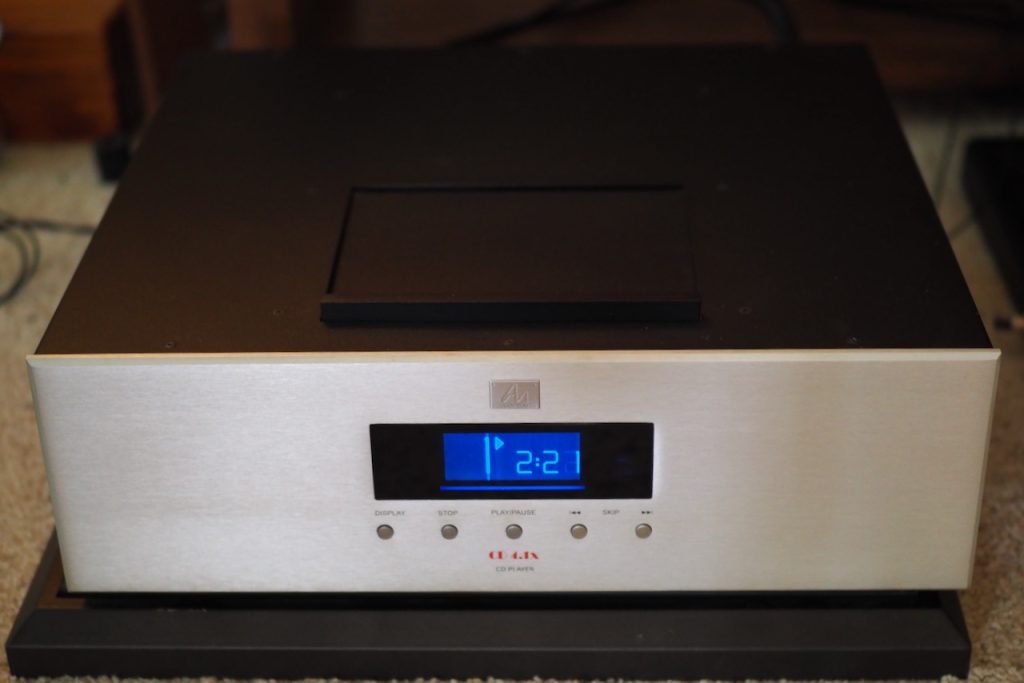
For example, the Level Three Audio Note (UK) CD 4.1x Red Book CD player (photo above) is two levels of performance above the Level One Audio Note (UK) CD 2.1x/II Red Book CD player (photo below) in the Audio Note (UK) CD player product line.

The price structure of Audio Note (UK) product lines also ascends with each ascending performance level. The price increase at ascending levels is due to the higher performance - and more expensive - internal circuit components, chassis, etc., used in building the components.
For example, the Level One Audio Note (UK) CD 2.1x/II Red Book CD player’s MSRP price is $5,657 USD, and the Level Three Audio Note (UK) CD 4.1x Red Book CD player’s MSRP price is $14,331 USD, a 2.5 times increase in price going from Level One to Level Three, due to the more ambitious component builds that yields the higher levels of performance.

To get a better idea of what the Audio Note (UK) ‘levels’ mean in terms of design, I asked Audio Note (UK)'s digital design guru, Darko Greguras (photo above), if he could tell us a little more about the design differences between the Level One Audio Note (UK) CD 2.1x/II and the Level Three Audio Note (UK) CD 4.1x CD players.

"The CD 4.1x was engineered to be a well balanced and musical sounding platform, and it shares the same design and voicing decisions we made for the CDT Two/II CD transport and the DAC 2.1x digital to analogue converter. The CDT Two/II and DAC 2.1x are tuned slightly differently to optimize them for a single chassis, and these two platforms combine for a stunningly musical result." (photo above)

"Starting with the reading side, the CD 2.1x/II is closer to the CDT One/II CD transport and its Philips L1210 mechanism (photo above), whereas the CD4.1x uses our in-house modified Philips CD Pro 2 mechanism.” (photo below)
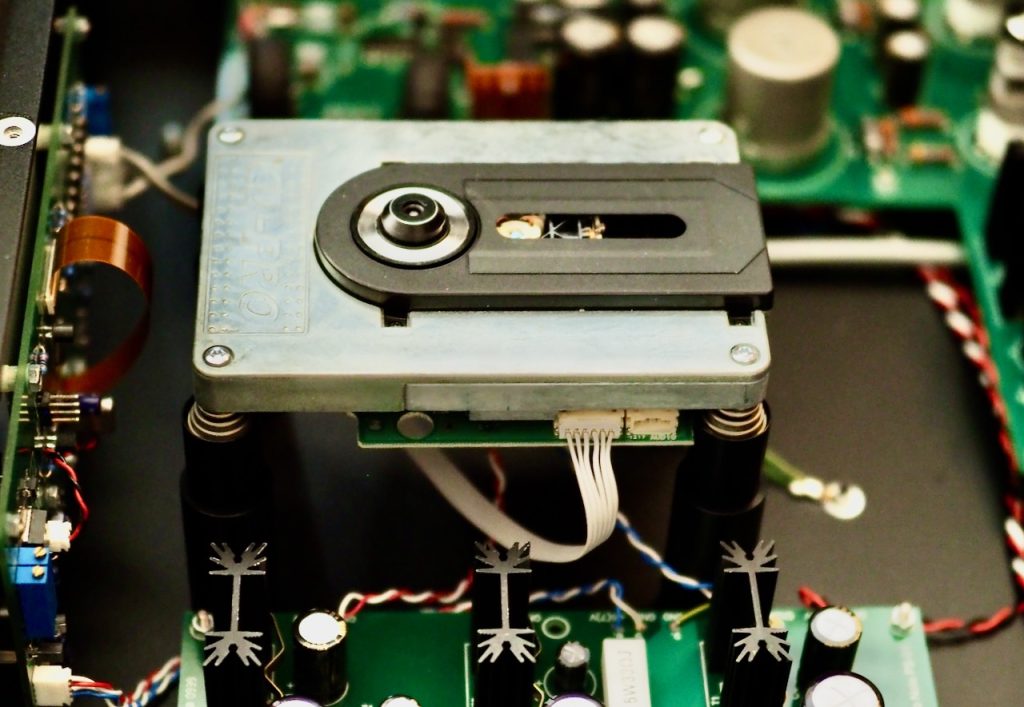
“The CD Pro 2 simply extracts harmony, musical flow, and tonal density far better, and it also benefits from a specially tuned power supply for optimal dynamic response."
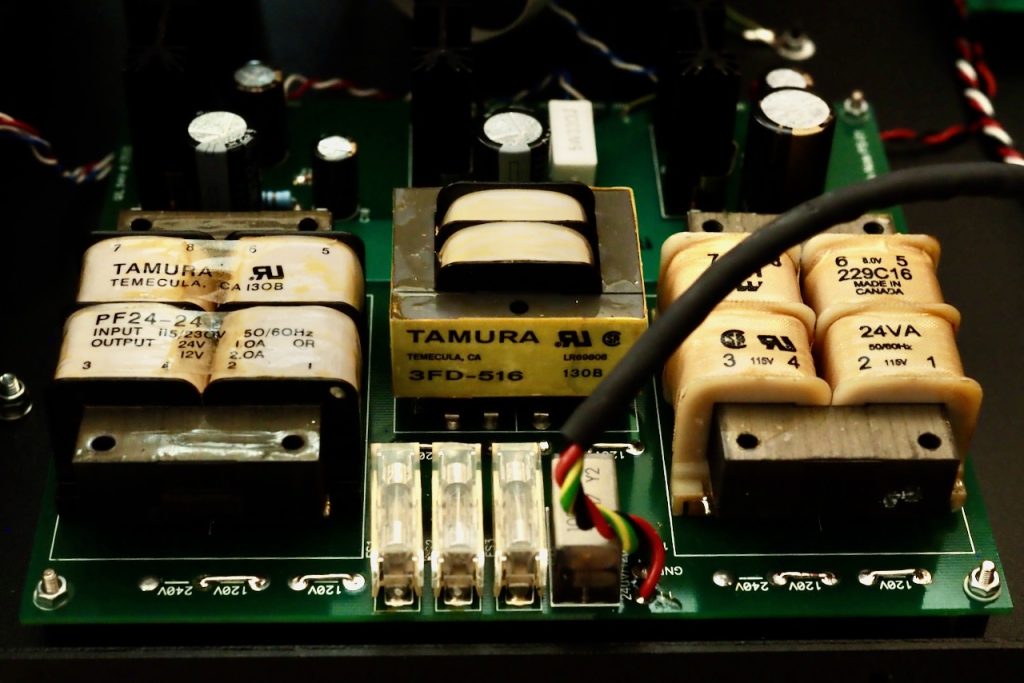
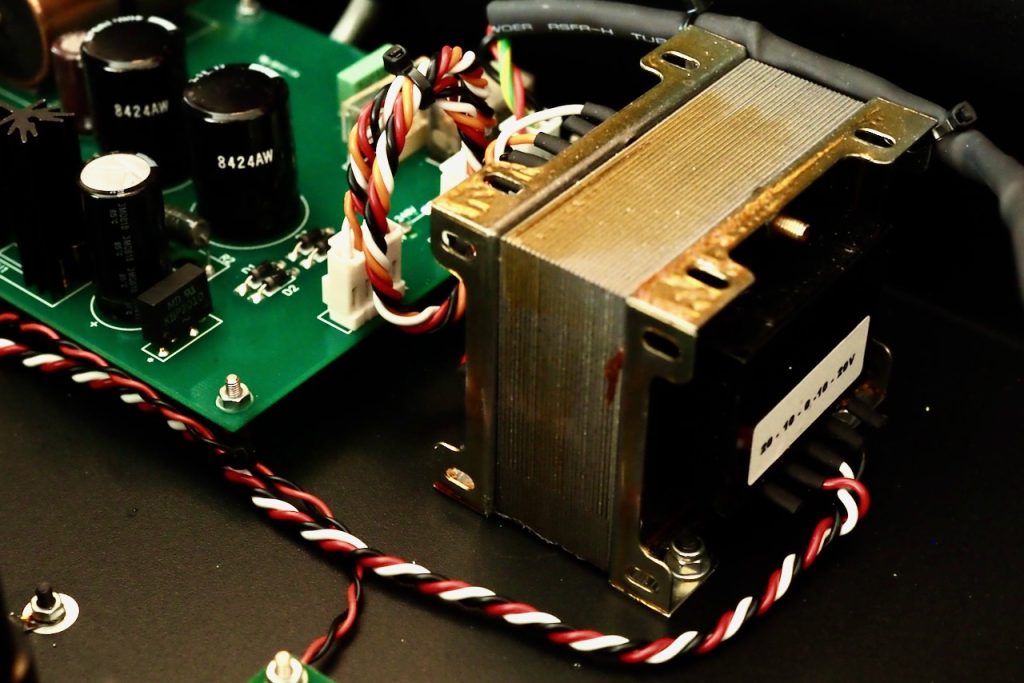
"The power supply sections are separated from the processor, logic circuits, motors and actuators and controller / display for the best sonic result.” (photos above)
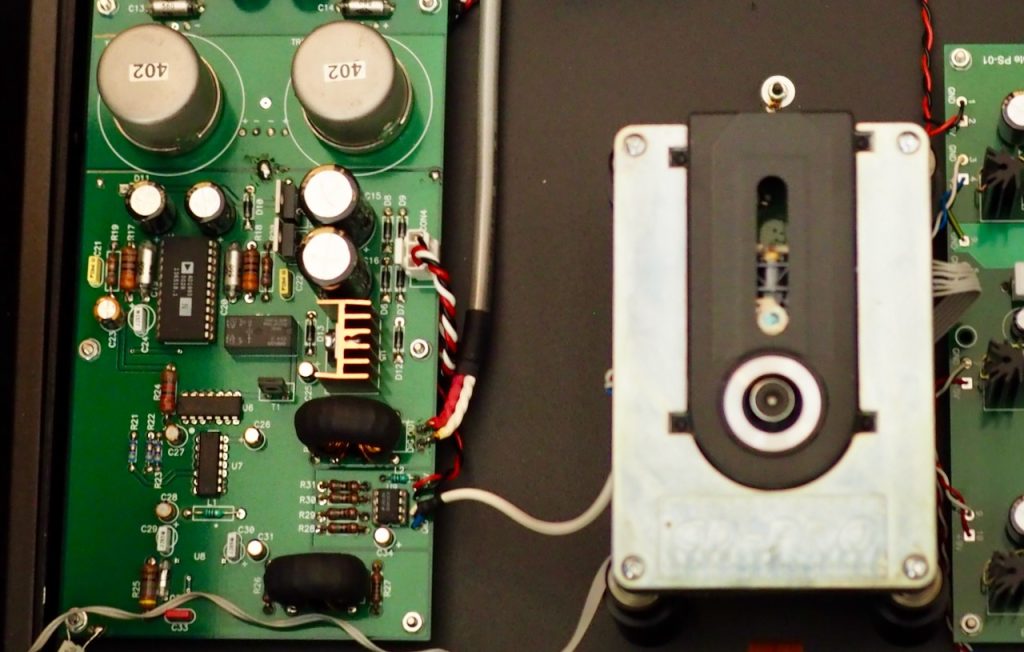
“The DAC section of the CD 4.1x (above) is based on the AD1865 digital to analogue converter and a pair of I/V transformers between the DAC section and an analogue output section based on a pair of ECC88 valves (photo below).”
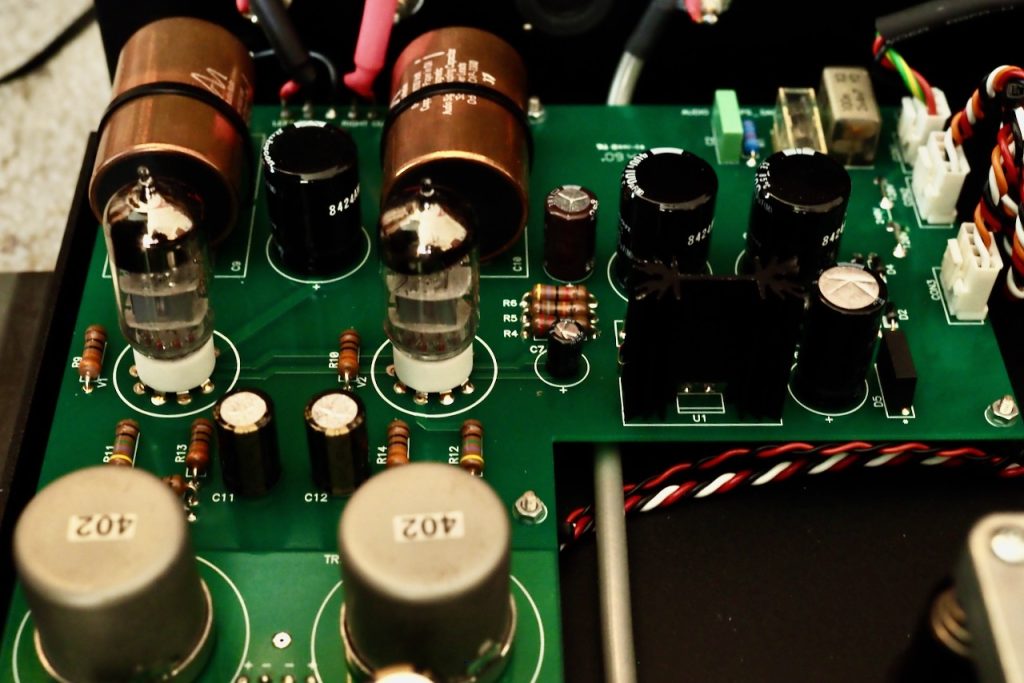
“All of our DACs and CD players are without oversampling and digital filtering, indicated by the “.1x” in their name, which means direct from disc."
“The benefits of the CD 4.1x’s DAC and analogue output sections over the CD 2.1x’s Philips 1543 16 bit converter chip and 6111WA miniature triode analogue output stage are significant, with the reading side, DAC side and the output stage all being more sophisticated and refined, with a much better dynamic transfer.”
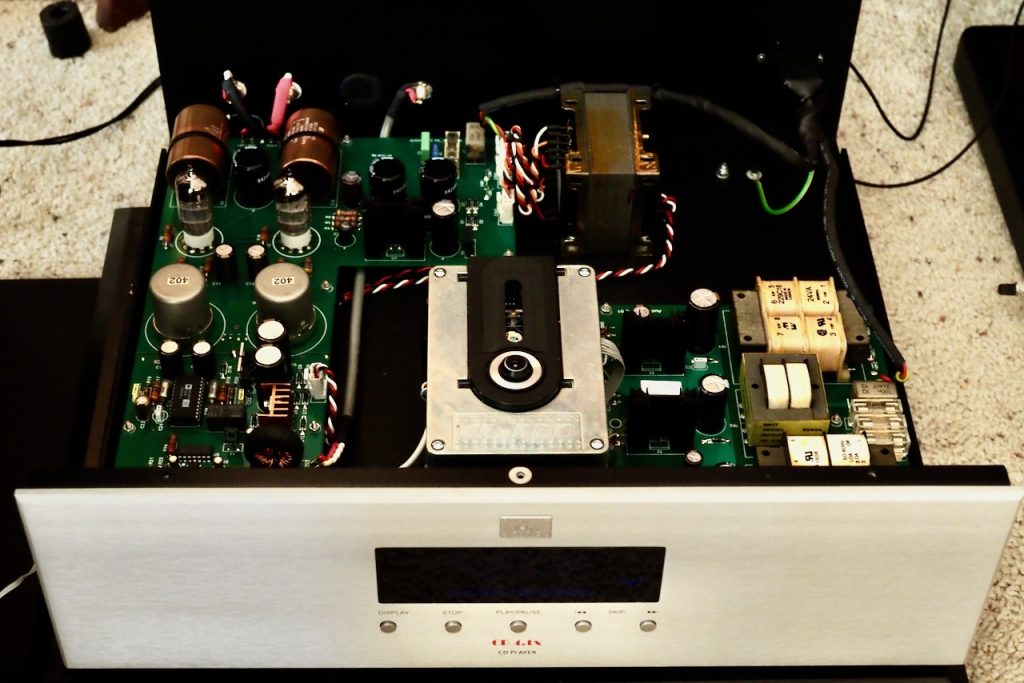
“The latest specification CD 4.1x uses the Tonmeister voicing strategy, consisting of our Audio Note (UK) standard electrolytic capacitors, Audio Note (UK) tantalum resistors, Audio Note (UK) copper foil coupling capacitors, and copper wiring throughout. This combination of parts superbly preserves the traditional Audio Note (UK) sonic sophistication, tonal balance, and dynamic transfer.
To summarize:

The Level One Audio Note (UK) CD 2.1x/II CD player (above) utilizes a modified Philips L1210 front-loading Red Book CD mechanism, and a digital to analogue converter based on the Philips 1543 16 bit converter chip. No oversampling and no digital filtering is utilized.
The analogue output stage incorporates a 6111WA miniature triode, and Audio Note (UK) copper foil output capacitors. The output voltage is approximately 3V RMS.
The Audio Note (UK) CD 2.1x/II CD player weighs 5 kg (11 pounds), and measures 96 mm (3.8 inches) high, 445 mm (17.5 inches) wide, and 270 mm (10.6 inches) deep.
The website link is HERE, and the owner’s manual link is HERE. MSRP is $5,657 USD.

The Level Three Audio Note (UK) CD 4.1x CD player utilizes a modified Philips CD Pro 2 top-loading Red Book CD mechanism, and a digital to analogue converter based on the Analogue Devices AD1865 18 bit converter chip. No oversampling and no digital filtering is utilized.
The analogue output stage incorporates two ECC88 dual triodes, and Audio Note (UK) copper foil output capacitors. The output voltage is approximately 3V RMS.
The CD 4.1x CD player uses the Tonmeister voicing strategy, with Audio Note (UK) standard electrolytic capacitors, Audio Note (UK) tantalum resistors, Audio Note (UK) copper foil coupling capacitors, and copper wiring throughout. The display has its own dedicated power supply to reduce internal noise, and the chassis design of the CD 4.1X is much more robust.
The Audio Note (UK) CD 4.1x CD player weighs 11 kg (24.3 pounds), and measures 142 mm (5.6 inches) high, 445 mm (17.5 inches) wide, and 428 mm (16.9 inches) deep.
The website link is HERE, and the owner’s manual link is HERE. MSRP is $14,331 USD.
Let’s do a ‘walk-around’ of the Audio Note (UK) CD 4.1x CD player.
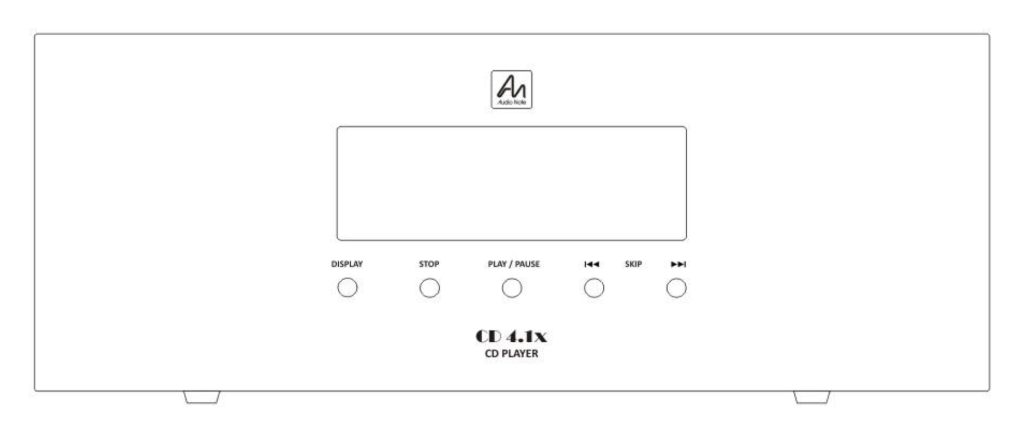
Diagram courtesy of Audio Note (UK).
From left to right on the front panel, are the buttons for “display” (change intensity or turn the display on/off), “stop” (to stop disc playback), “play/pause” (to pause play of a disc), “reverse skip” (to go to the previous track on a disc), and the “forward skip” (to go to the next track on a disc).
The display shows all the usual information about playing a CD; the total playing time of the disc, the playing time of each track, etc.
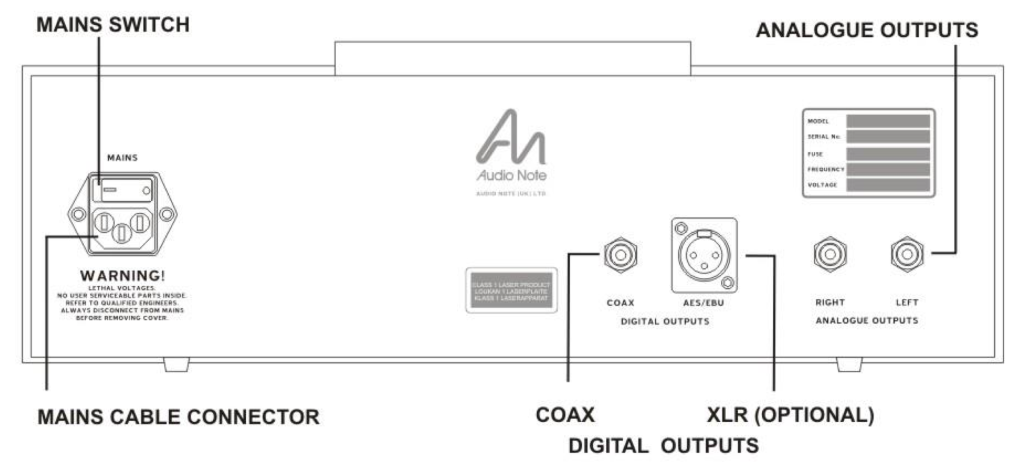
Diagram courtesy of Audio Note (UK).
From left to right of the rear panel you see the mains power switch and mains cable connection, an RCA coax digital output, an optional AES/EBU XLR output, and the RCA analogue left and right outputs.

Diagram courtesy of Audio Note (UK).
On the top of the CD 4.1x is a sliding door that covers the disc. To load and play a disc, the sliding door is opened, the disc clamp is removed, the disc is placed on the spindle, the disc clamp is placed over the spindle and disc, and the door is closed. Then you’re ready to play.
As a result, the user experience with the CD 4.1x is very analogue-like, and comparable to the listener placing a record on the turntable spindle, adding a record weight, and then playing music.
Those who have a turntable as part of their hifi system will feel right at home with the Audio Note (UK) CD 4.1x CD player.
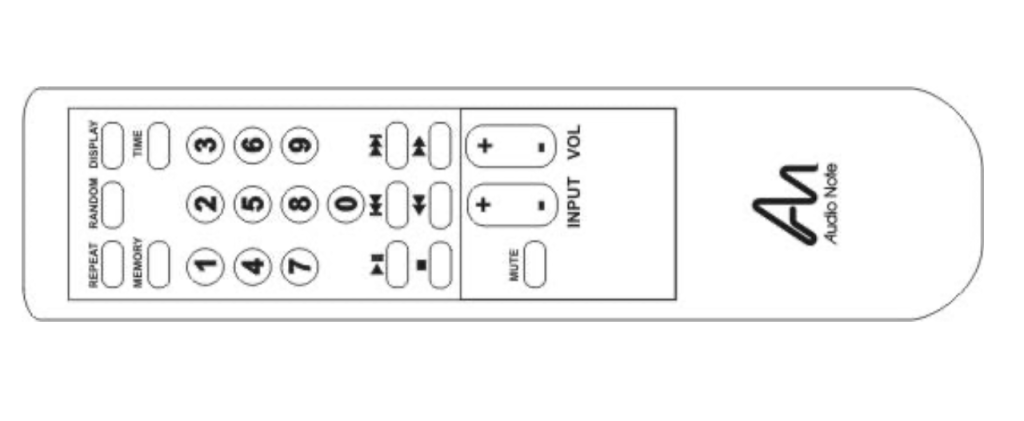
Diagram courtesy of Audio Note (UK).
A programable remote control comes with the CD 4.1x that gives you all the usual remote features. For a full description of the remote control features see the owner’s manual HERE.
Just by visual inspection, inside and out, its easy to tell that the Audio Note (UK) CD 4.1x Red Book CD player is a serious pro-level product.
The hand-built Audio Note (UK) CD 4.1x CD player oozes quality inside and out, from its robust chassis, to its customized top-loading Philips CD Pro 2 transport, and the über quality of components in its power supplies, its non-oversampling and non digital-filtering DAC, and the analogue vacuum tube output section, its easy to tell the Audio Note (UK) CD 4.1x Red Book CD player means business.
Review System
The review system used for this article was my Tannoy Westminster Royal SE loudspeakers with custom external Duelund CAST crossovers, and the custom Triode Lab 45 EVO SET integrated amplifier.
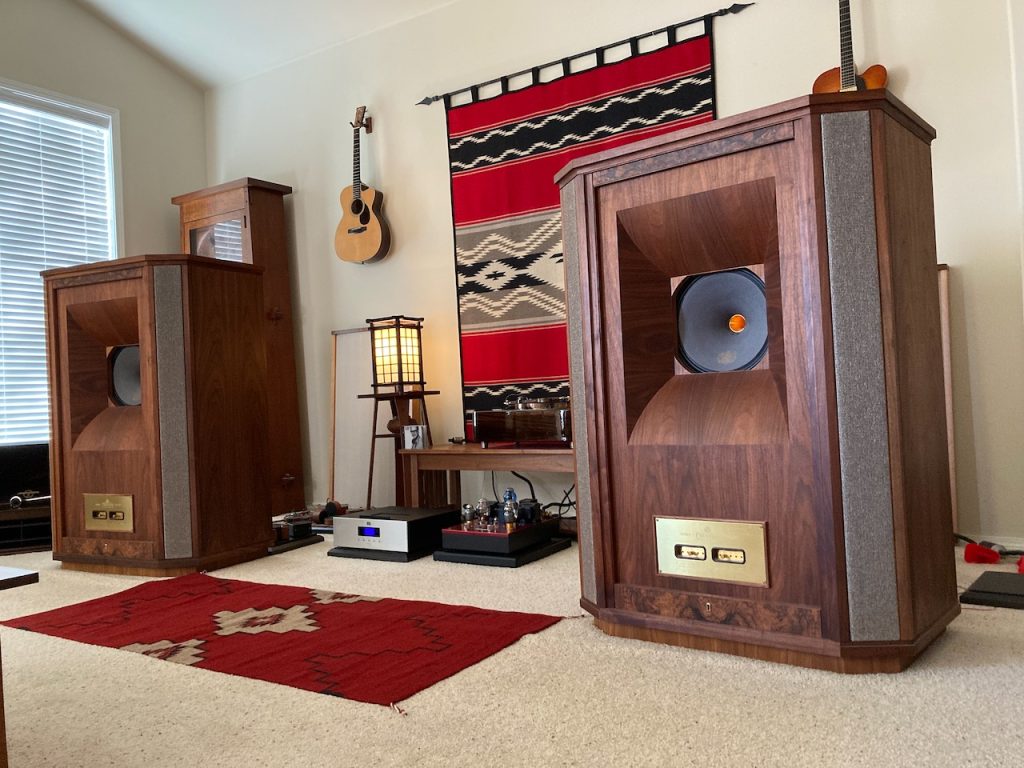
The cables used for this article were the vintage inspired Duelund DCA16GA tinned-copper speaker cables, with vintage Western Electric WE16GA tinned-copper cabling being used for all driver connections inside my Westminsters, and to connect to the external Duelund crossovers.
Duelund 'Dual' DCA16GA tinned-copper interconnects terminated with plastic-free Duelund RCAs connected the Audio Note (UK) CD 4.1x CD player to the Triode Lab 45 EVO SET integrated amplifier.
Belden 8402 tinned-copper microphone cable interconnects connected the Leben RS-30EQ phono equalizer to the Triode Lab 45 EVO integrated amplifier.
Audio Note (UK) AN-V silver interconnects connected the Audio Note (UK) AN-S4 step-up transformer to the Leben RS-30EQ phono equalizer.
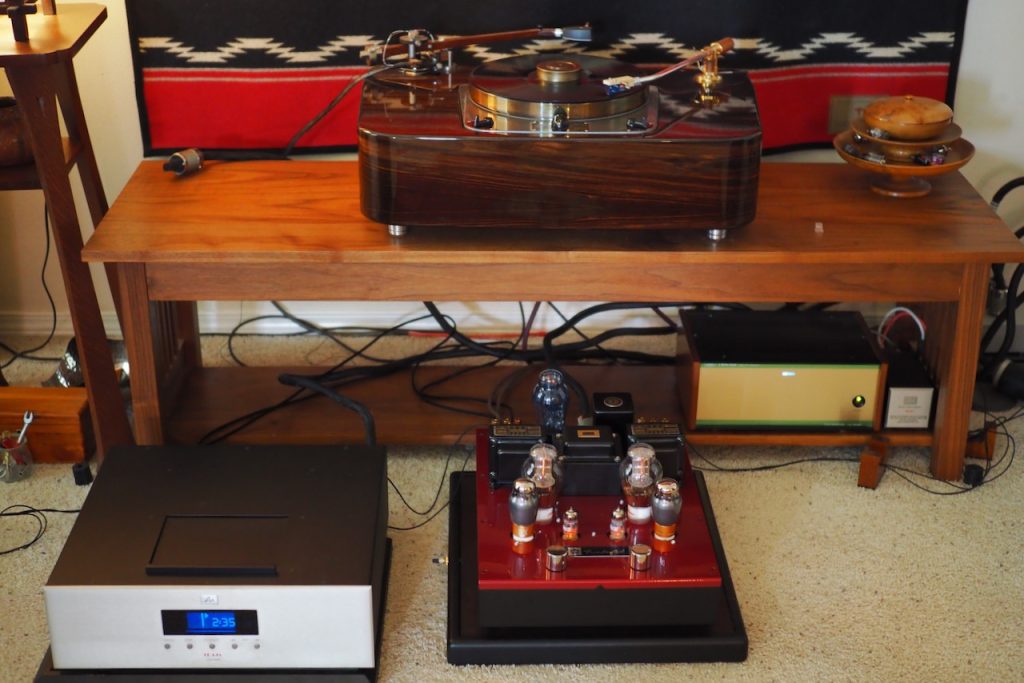
The Audio Note (UK) CD 4.1x CD player and Triode Lab 45 EVO SET integrated amplifier were placed upon Acoustic Revive isolation platforms.
Power cables for all the components were Acoustic Revive Absolute, which were all plugged into an Acoustic Revive RPT-6 Absolute NCF Power Distributor unit, which itself was connected to wall AC with an Acoustic Revive Absolute power cable.
My AC wall outlets consisted of the Acoustic Revive CB-1DB receptacle base plate, CFRP-1F carbon fiber outlet plate, and an Acoustic Revive modified Oyaide R-1 receptacle.

The Audio Note (UK) Io I MC phono cartridge, AN-S4 step-up transformer, and AN-V silver interconnects (review HERE), served as the analog comparator in combination with my custom CTC Garrard 301 turntable.
The Audio Note (UK) CD 2.1x/II CD player (review HERE) was used as a digital comparator.
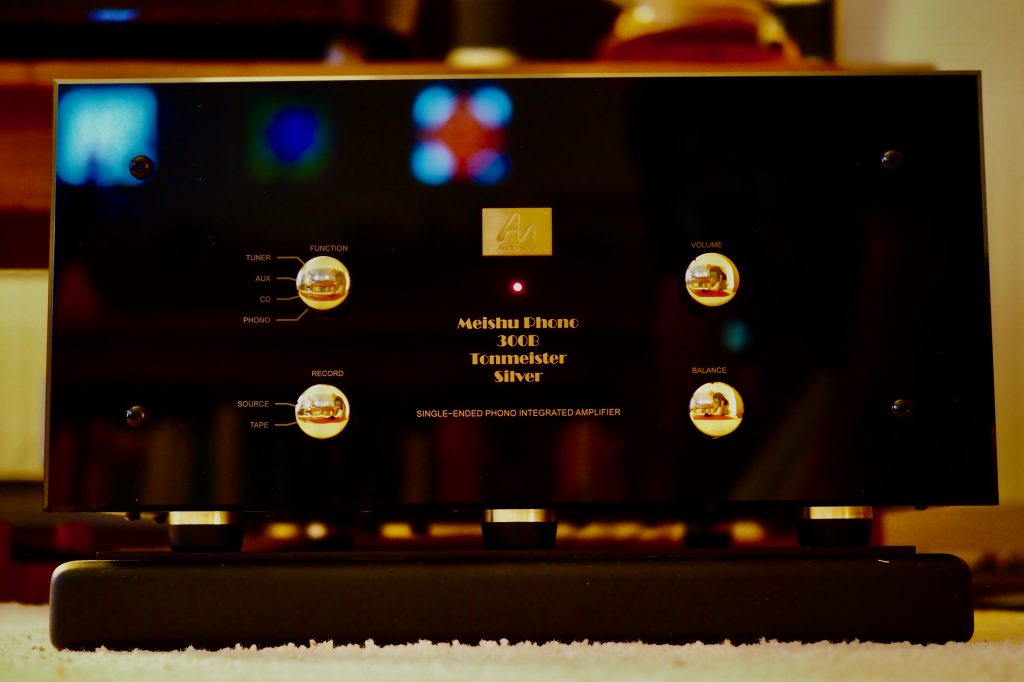
I had planned on introducing the Audio Note (UK) Meishu Phono Silver Tonmeister 300B SET integrated amplifier to the readers of Positive Feedback as part of this article (above), however, the Meishu hasn’t reached its 200 hours of recommended run-in time yet, so the Meishu is still building up its run-in hours in my vintage Altec A5 Voice of the Theatre audio-visual system.
As soon as the Meishu’s run-in hours are topped off, I’ll transfer it over to my Tannoy Westminster Royal SE loudspeakers based music system for its upcoming Positive Feedback feature review, which is coming up next in my review queue.
In that article I’ll also provide listening impressions about the full Audio Note (UK) Level Three components suite - sources to amplification - that I have here.
Now let’s do some listening with the Audio Note (UK) CD 4.1x CD player.
I’ll provide my impressions of the Audio Note (UK) CD 4.1x CD player’s performance on a variety of music from the acoustic, electric, and magnetic eras of the recording arts.
I’ll also offer my impressions of the Level Three Audio Note (UK) CD 4.1x CD player’s performance in comparison to that of the Level One Audio Note (UK) CD 2.1x/II CD player (the Issue 112 feature review is HERE).
Additionally, for all you vinyl aficionados out there, I’ll offer my impressions of the Level Three Audio Note (UK) CD 4.1x CD player’s performance for playing back some exceptionally well-recorded albums of music from the stereo period of the magnetic recording era, and compare its performance to the analogue source combination of the Level Three Audio Note (UK) Io I moving-coil cartridge, Level Four Audio Note (UK) AN-S4/L step-up transformer, and Level Three Audio Note (UK) AN-V silver interconnects (review HERE) for playing back those same albums on vinyl.
Listening
Ok, that's all for now. I'm finishing writing up my listening impressions now, so expect to see the full feature review of the Audio Note (UK) CD 4.1x CD player published in Positive Feedback in the next week or so.
As always, thanks for stopping by, and may the tone be with you!

